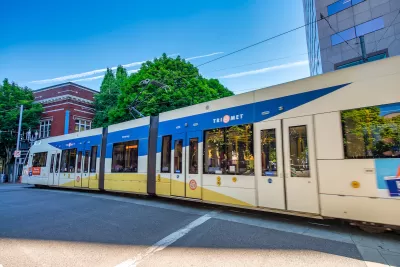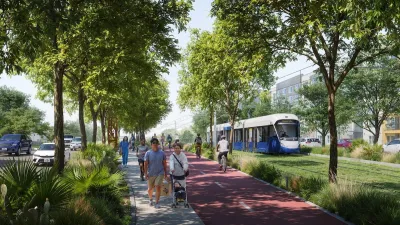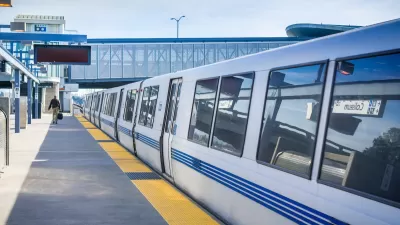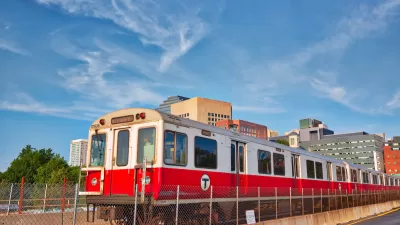When temperatures hit 100 degrees, the city’s two train systems face challenges that force them to slow their speeds or stop operations altogether.

Portland’s MAX trains must slow down after temperatures hit 100 degrees, reports Anthony Macuk for KGW.
According to Macuk, “TriMet has upgraded the system in recent years to maintain full speed at higher temperatures, but there's still an upper limit.” After 100 degrees, MAX trains will slow down to a top speed of 35 miles per hour, while WES trains will top out at 40 mph.
At 105 degrees, the WES trains stop running. If temperatures get that high, TriMet may adjust or suspend service on MAX trains, but that decision is made based on conditions throughout the system and out of consideration for the safety of riders and employees.
As Macuk explains, “MAX trains are powered by overhead wires, which have to be kept taut so the train's pantograph arm can maintain steady contact. But the wires are made of copper, which expands when heated and can cause sagging.” If the sagging causes the lines to sink too low, trains have to slow down or stop entirely.
WES trains face a different problem, one that could impact Amtrak and other train systems as well. “TriMet's WES trains are diesel-powered and run on Portland & Western freight rail tracks with no overhead wires, but they can still get tripped up by heat waves because the high temperatures can also cause the steel rails to expand and temporarily deform — a phenomenon called ‘sun kinks’ — making it unsafe to drive trains over them at full speed.”
FULL STORY: Yes, TriMet MAX trains have to slow down when it's very hot out

Manufactured Crisis: Losing the Nation’s Largest Source of Unsubsidized Affordable Housing
Manufactured housing communities have long been an affordable housing option for millions of people living in the U.S., but that affordability is disappearing rapidly. How did we get here?

Americans May Be Stuck — But Why?
Americans are moving a lot less than they once did, and that is a problem. While Yoni Applebaum, in his highly-publicized article Stuck, gets the reasons badly wrong, it's still important to ask: why are we moving so much less than before?

Using Old Oil and Gas Wells for Green Energy Storage
Penn State researchers have found that repurposing abandoned oil and gas wells for geothermal-assisted compressed-air energy storage can boost efficiency, reduce environmental risks, and support clean energy and job transitions.

Greening Oakland’s School Grounds
With help from community partners like the Trust for Public Land, Oakland Unified School District is turning barren, asphalt-covered schoolyards into vibrant, green spaces that support outdoor learning, play, and student well-being.

California Governor Suspends CEQA Reviews for Utilities in Fire Areas
Utility restoration efforts in areas affected by the January wildfires in Los Angeles will be exempt from environmental regulations to speed up the rebuilding of essential infrastructure.

Native American Communities Prepare to Lead on Environmental Stewardship
In the face of federal threats to public lands and conservation efforts, indigenous groups continue to model nature-centered conservation efforts.
Urban Design for Planners 1: Software Tools
This six-course series explores essential urban design concepts using open source software and equips planners with the tools they need to participate fully in the urban design process.
Planning for Universal Design
Learn the tools for implementing Universal Design in planning regulations.
Heyer Gruel & Associates PA
City of Moreno Valley
Institute for Housing and Urban Development Studies (IHS)
City of Grandview
Harvard GSD Executive Education
Salt Lake City
NYU Wagner Graduate School of Public Service
City of Cambridge, Maryland





























